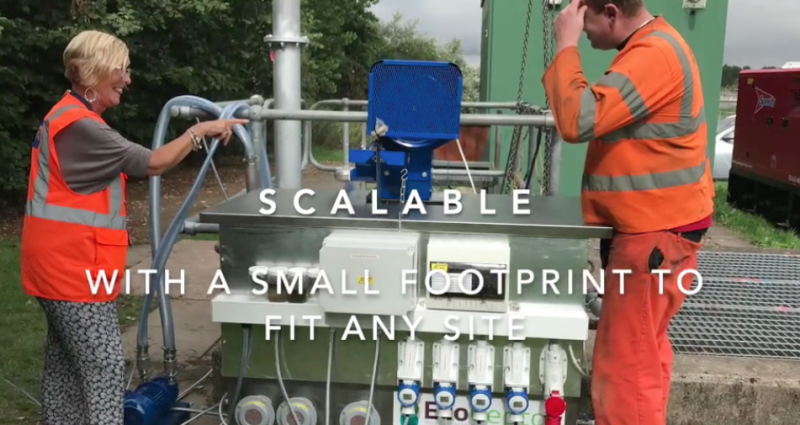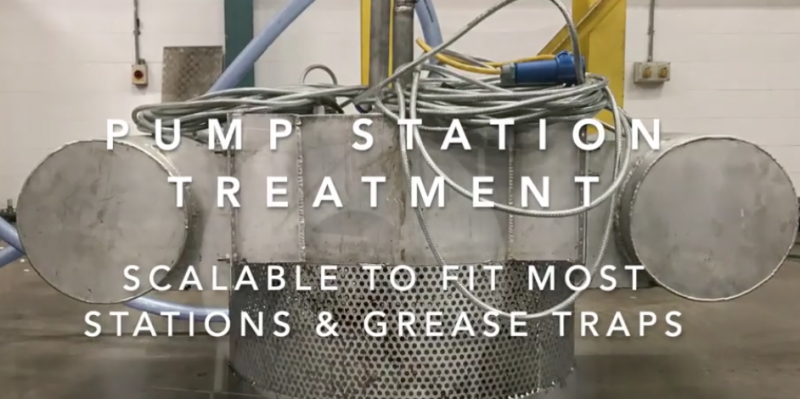In Conversation with Chris Clemes & Veronica Cazarez, Co-founders of EcoClarity
Published on by Water Network Research, Official research team of The Water Network in Business

Would you be kind to tell us about your company and your vision?
Eco Clarity was formed in 2013 with a vision of creating clean water and pure energy.
We have a proven technology called the Eco Ceptor, which is able to harvest Fats, Oils and Grease (FOG) in real time, throughout the waste stream network.
By providing our Eco Ceptor plants on a full maintenance and service agreement, which includes all FOG collections, we can create incentives for stakeholders both private and public to actively harvest FOG and significantly reduce clean up and logistics costs.
By utilising this FOG waste as a feedstock for energy production, we are able to achieve our vision of creating clean water and generating renewable energy.

Please provide details about your FOG solution, particularly about the Eco Ceptor, how it works, what problem it solves, and what are its benefits comparing to other solutions?
Our Eco Ceptor is an advanced oil, water and solid separation plant designed to operate stand-alone or with existing infrastructure and grease traps. It overcomes the problems associated with previous FOG removal technologies and has been refined following years of work with the teams at Thames Water, Severn Trent and United Utilities in the UK.

The plants are scalable and modular making them adaptable to suit any site and to handle any FOG volume. Our Pump Station plant includes a floating head which is immersed in the well and harvests FOG in real time to our above ground Eco Ceptor where the FOG is collected and condensed. The water which is returned to the pump station has a FOG content of less than 2%. The plants have been designed with a very small footprint to suit most sites and can harvest in excess of 300 liters of FOG per day.
Our Inlet Works plants can accept waste from scheduled pump station cleans and also from private grease trap companies.

These plants separate FOG, Grit and Rags before they enter the inlet works and significantly reduce reactive clean up costs and reduce BOD at the works.
What is a fatberg and how big of a problem is this for utilities? They seem to be getting bigger and worse, why this trend and what is the industry doing about it?
A fatberg is caused by the build-up of Fats, Oil and Grease in the sewer network. The FOG which enters the drains from food service establishments, factories and residential kitchens solidifies in the drains, combining with wet wipes and other waste to constrict the flow. The size of the fatberg problem is really unknown with many fatbergs lurking under the streets waiting to be found.
Unfortunately, this is usually only the case once there is a flooding incident and an investigation uncovers the cause. They are a ticking timebomb under the streets and cost the water utilities hundreds of millions of pounds of damage each year.
I think the recent use of wet wipes and their flushing down the drains has significantly contributed to the problem.
How does Eco Clarity contribute to the “fight against fatbergs”?
All water utilities are aware of FOG entering their networks but the current response is reactive. By proactively harvesting FOG we can quantify how much FOG has been diverted from entering and solidifying in the sewer and calculate the savings compared to reactively digging up streets to access blocked pipes, which is the current practice.
This does not include the fines associated with these blockages and back ups which cause flooding of streets and commercial and residential properties. It is estimated that each litre of used cooking oil tipped down the drain costs the consumer 14 pence through water utility bills.
You are offering the complete service including consultancy, design, manufacture, supply, delivery, on-site testing, installation, commissioning, provision of associated documentation and basic maintenance training. Why not just sell your product and let your clients do the rest? What is the onboarding process for a new client?
We believe that the provision of a complete solution is critical to actively harvesting FOG from the waste stream. Currently, the majority of grease traps are sold and the FSE owners must book their own collections when they are full. It is a legal requirement to own a grease trap but there is no incentive to have it cleaned regularly. If a grease trap is not cleaned regularly it overflows into the sewer meaning that the benefits of stopping the FOG at source are negated.
By partnering with grease trap cleaners as part of our service agreement and providing local disposal sites we are able to collect FOG more regularly and reduce logistics costs for these companies, who can, in turn, pass on their savings to the FSE owner creating a win-win for all stakeholders.
By harvesting the FOG more regularly at the site we also reduce the volume of FOG entering the wastewater network and forming fatbergs.
We also install Eco Ceptors in pump stations and inlet treatment works to capture FOG entering these sites and significantly reducing clean up costs for Water Utilities.
What are your key priorities until 2020?
We are focussed on partnering with Water Utilities, FSE’s and Grease Trap Cleaners worldwide to install our Eco Ceptors at problematic sites generating clean water and energy from a problematic waste.
We are currently looking for partners in the EU, USA, Africa, Asia, and Australia.
From your perspective, how well is the UK market adjusting to the circular economy and how do you think this market will change in the next few years?
I think that we are seeing progress being made in theory, however, it seems that there is a high amount of bureaucracy which stifles innovation and roll out of a scale to make a significant impact.

READ MORE ABOUT EcoClarity & connect to Chris and Veronica HERE
Read More Interviews from the 'In Conversation With' Series
by The Water Network
Media
Taxonomy
- Sewage Treatment
- Raw Sewage Recycling
- Sewage
- Sewer Networks